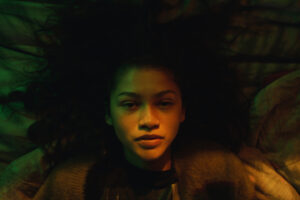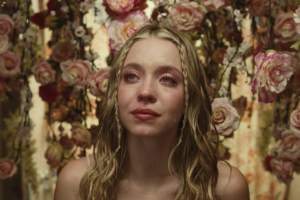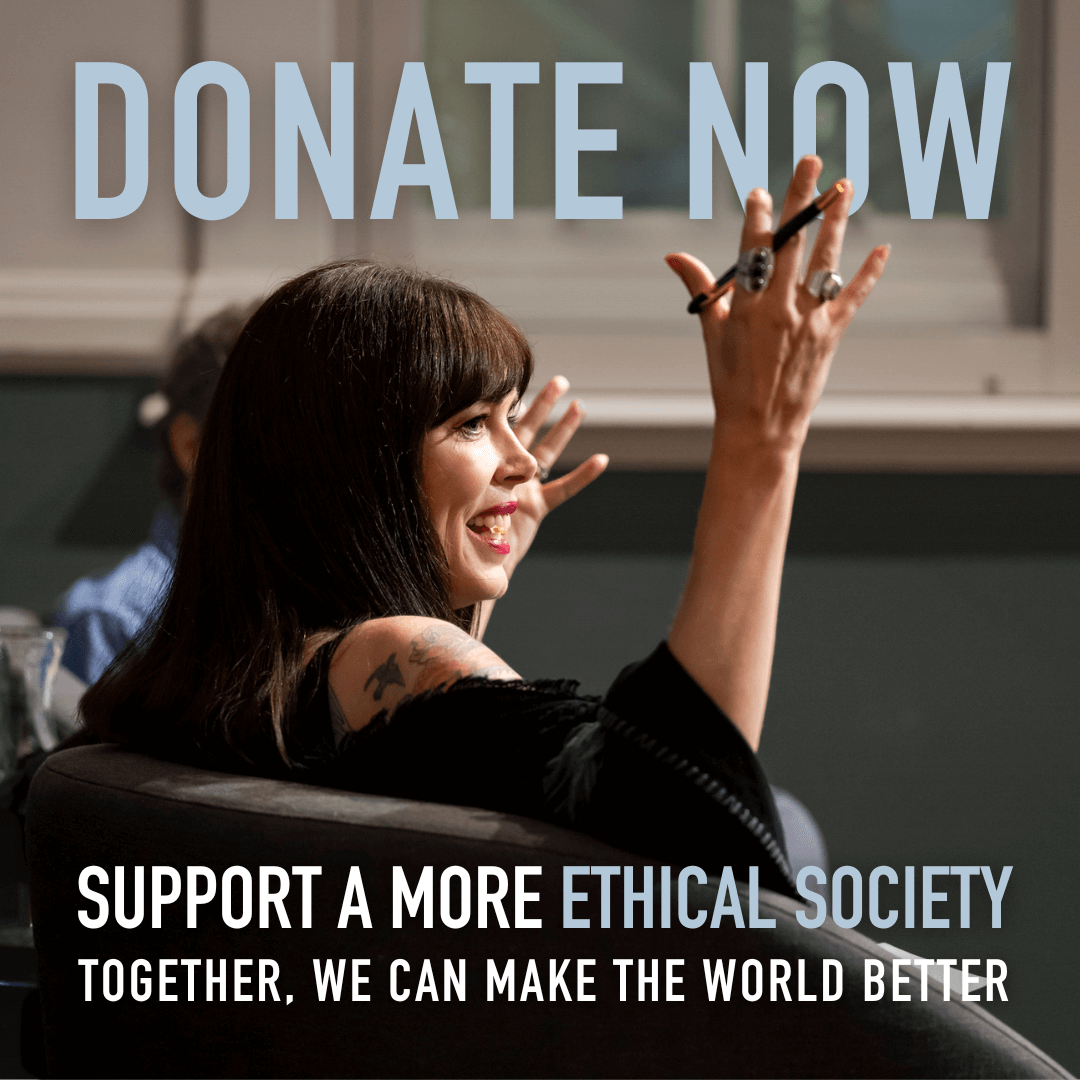
Breakdowns and breakups: Euphoria and the moral responsibility of artists
Opinion + AnalysisRelationshipsSociety + Culture
BY Joseph Earp 28 FEB 2022
Euphoria has been, for almost two years now, approaching a fever pitch of horror, addiction, heartbreak and self-destruction.
Its assembled cast of characters – most notably Rue (Zendaya), who starts the first season emerging straight out of rehab – sit constantly on the verge of total nervous collapse. They are always one bad party away from cataclysmic suffering, their lives hanging in a painful balance between “just about getting by” and “absolute devastation.”
Indeed, even if its utter melodrama means that Euphoria doesn’t actually reflect how high school is – who could cram in that much explosive melancholy before the lunch bell? – it certainly reflects how high school feels. There are few experiences more tortured and heightened than being a teenager, when your whole skin feels on fire, and possibilities splinter out from in front of your feet at every single moment. There is the sense of the future being unwritten; of your life being terrifyingly in your own hands.
But what does Euphoria’s constant hysteria do to its viewers, particularly its younger ones? If the devastation of adolescence really is that severe, then are artists failing, somehow, if they merely reflect that devastation? Should we ask our art to serve an instructional purpose; to pull us out of the traps we have built for ourselves? Or should art settle into those traps, letting their metal teeth sink into their skin?

Image: Euphoria, HBO
The Long History Of “Evil” Art
The question of the moral responsbility of artists is particularly pertinent in the case of Euphoria because of its emphasis on what have been typically viewed as “illicit” activities, from drug-taking to underage sex. These are – to the great detriment of a truly free society – taboo subjects, deemed inappropriate for discussion in public spaces, and condemned to be whispered, rather than shouted about.
Indeed, there is a long history of conservatives and moral puritans rallying against artworks that they feel ‘glamorize’ or somehow indulge bad and illegal behaviour. Take, for instance, the Satanic Panic that gripped the United Kingdom in the ‘80s. Shortly after the advent of home video, the market became flooded with what were then termed “video nasties”, a wave of cheaply made horror films that actively marketed themselves for their moral repugnance. The point was how many taboos could be broken; into how much blood and muck and horror that filmmakers could sink themselves, like half-formed and discarded babies being thrown to rest in a mud puddle.
This, to many pro-censorship thinkers at the time, was seen as a kind of moral crime – an unspeakable act, with the ability to influence and addle the minds of Britain’s younger generation. The demand from conservatives was that art be a way of modelling good ethical behaviour, and the worry, expressed furiously in the tabloids, was that any other alternative would lead to the breakdown of society itself.
So no, the question as to whether art should be instructional is not new; the fear that it might lead the minds of the younger generation astray far from fresh. Euphoria might seem relentlessly modern, with its lived-in cinematic voice, and its restless politics. But it is part of a tradition of artworks that submerge themselves in darkness and despair; vice and what some, most of them on the right, deem the immoral.
The Unspoken Becomes Spoken
The mistake made, however, by those who imagine such art is failing an explicit moral purpose, a kind of sentimental education, rests on an outdated and functionally useless understanding of morality. These critics imagine that there is just one way to live well. They believe in uncrossable boundaries of taboo and immorality; that there are iron-wrought moral rules, and that any art that breaks those rules will lead to some kind of negative and harmful shifting of what is acceptable amongst the citizens of any democratic society.
But why should we believe that morality is so strict? We would do well to move away from an objective, centralised view of morality, where there exists a list of rules, printed in indelible ink somewhere, that are inflexible and pre-ordained. Societally, as well as personally, change is the only constant. If we abide by a set of constructed ethical principles that do not reflect that change, we will be forever torn between a possible future and a weighty past, bogged down in a system of conduct that no longer represents the complexity of what it means to be human.
If we have any true moral imperative, it is to constantly be in the process of testing and re-shaping our morals. It was John Stuart Mill who developed a similar concept of truth – who believed that we could only remain honest, and democratic, if we were forever challenging that which we had taken for granted. Art is a process of this moral re-shaping. Great art need not shy away from that which we hold to be “good” or “right”, or, on the flipside, “harmful” and “taboo.”
It is not that art need to be amoral, free from ethical concerns, with artists resisting any urge to provide some form of moral instruction – it is that we need to let go of the idea that this moral instruction can only take the form of propping up old and unchanging notions of goodness. The immoral and the moral are only useful concepts if they teach us something about how to live, and they will only teach us something about how to live if we make sure they are forever being tested and examined.
Finding Yourself

Image: Euphoria, HBO
This is what Euphoria does. By basking in that which has been taken as illicit – in particular, the sex and chemical lives of America’s teenagers – the show makes the unspoken spoken. It draws into focus an outdated and ancient view of the good life, and challenges us to stare our conceptions of self-perpetuation and self-destruction in the face.
Rue, forever in the process of re-shaping herself in the shadow of her great addiction, makes mistakes. Cassie (Sydney Sweeney), Euphoria’s shaking, panic-addled heart, makes even more. Both of them stray from pre-written social conceptions of the “good girl”, dissolving an ancient and harmful angel/whore dichotomy, and proving that there are no static boundaries between what is admirable and what is abhorrent.
Just as the show itself skirts back and forth across the line between our notions of the ethical and the immoral, so too do these characters forever find themselves testing the limits of what is good for them, and those around them. They are flawed, vulnerable people. But in these flaws – in this very notion of trembling possibility, the rules of good conduct forever being written in sand – they do provide us with a moral education. Not one that rests on simplistic notions of what we should do, and when. But one that proves that as both a society, and as individuals in that society, we should always be taking that which has been shrouded in darkness and throw it – sometimes painfully – into the light.
Ethics in your inbox.
Get the latest inspiration, intelligence, events & more.
By signing up you agree to our privacy policy
You might be interested in…
Opinion + Analysis
Relationships
Appreciation or appropriation? The impacts of stealing culture
Explainer
Business + Leadership, Politics + Human Rights, Relationships
Ethics Explainer: Power
Opinion + Analysis
Politics + Human Rights, Relationships
To Russia, without love: Are sanctions ethical?
Opinion + Analysis
Society + Culture, Relationships




